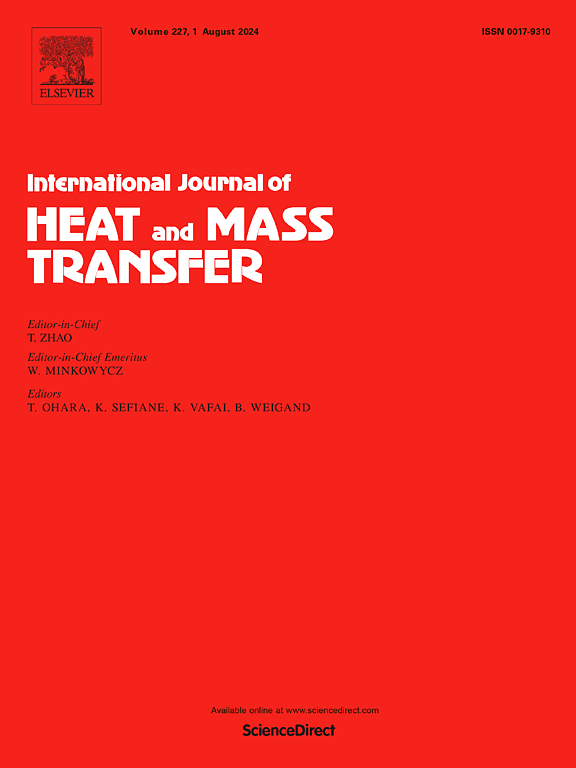The suppression and CO elimination performance of Co3O4 dust cloud for methane-air mixture explosion
IF 5
2区 工程技术
Q1 ENGINEERING, MECHANICAL
International Journal of Heat and Mass Transfer
Pub Date : 2024-12-02
DOI:10.1016/j.ijheatmasstransfer.2024.126492
引用次数: 0
Abstract
This paper experimentally studied the effect of Co3O4 dust clouds on the methane-air mixture explosion characteristics and post-explosion CO concentration, aiming to propose a novel method for simultaneously suppressing explosion and eliminating CO product. The Co3O4 catalyst was synthesized utilizing the co-precipitation method. We varied the methane concentration and Co3O4 dust cloud concentration to investigate their effects on the flame propagation behavior, maximum explosion overpressure (), flame combustion time (), and the gaseous product concentration. The hazard of the gaseous product was evaluated by the effective escape time () based on the Fraction Effective Dose (FED) mathematical model. The results demonstrated that the Co3O4 dust cloud could significantly reduce the explosion severity and CO concentration. Furthermore, the higher the concentration of Co3O4 dust clouds, the more significant the explosion suppression and CO elimination performance, which was as a result of the significant increase in the contact area and collision probability between the Co3O4 particles and the reaction components increased. Compared to traditional inhibitors that only reduce the severity of an explosion, Co₃O₄ could not only significantly reduce the explosion severity, but also quickly eliminate post-detonation CO. The method proposed in this paper could effectively reduce the hazard of methane-air mixture explosion, which was of great practical significance for ensuring the safety of personnel involved in the risk.

Co3O4粉尘云对甲烷-空气混合爆炸的抑制和消CO性能
本文通过实验研究了Co3O4粉尘云对甲烷-空气混合物爆炸特性和爆炸后CO浓度的影响,旨在提出一种同时抑制爆炸和消除CO产物的新方法。采用共沉淀法合成了Co3O4催化剂。研究了甲烷浓度和Co3O4尘云浓度对火焰传播行为、最大爆炸超压(Pm)、火焰燃烧时间(tc)和气体产物浓度的影响。基于分数有效剂量(FED)数学模型,用有效逸出时间(te)对气体产物的危害进行评价。结果表明,Co3O4粉尘云能显著降低爆炸严重程度和CO浓度。Co3O4粉尘云浓度越高,抑制爆炸和消除CO的效果越显著,这是由于Co3O4颗粒与反应组分的接触面积和碰撞概率显著增加所致。与传统的仅能降低爆炸严重程度的缓释剂相比,Co₃O₄不仅能显著降低爆炸严重程度,还能快速消除爆后Co。本文提出的方法能有效降低甲烷-空气混合物爆炸的危险性,对保障危险中相关人员的安全具有重要的现实意义。
本文章由计算机程序翻译,如有差异,请以英文原文为准。
求助全文
约1分钟内获得全文
求助全文
来源期刊
CiteScore
10.30
自引率
13.50%
发文量
1319
审稿时长
41 days
期刊介绍:
International Journal of Heat and Mass Transfer is the vehicle for the exchange of basic ideas in heat and mass transfer between research workers and engineers throughout the world. It focuses on both analytical and experimental research, with an emphasis on contributions which increase the basic understanding of transfer processes and their application to engineering problems.
Topics include:
-New methods of measuring and/or correlating transport-property data
-Energy engineering
-Environmental applications of heat and/or mass transfer

 求助内容:
求助内容: 应助结果提醒方式:
应助结果提醒方式:


